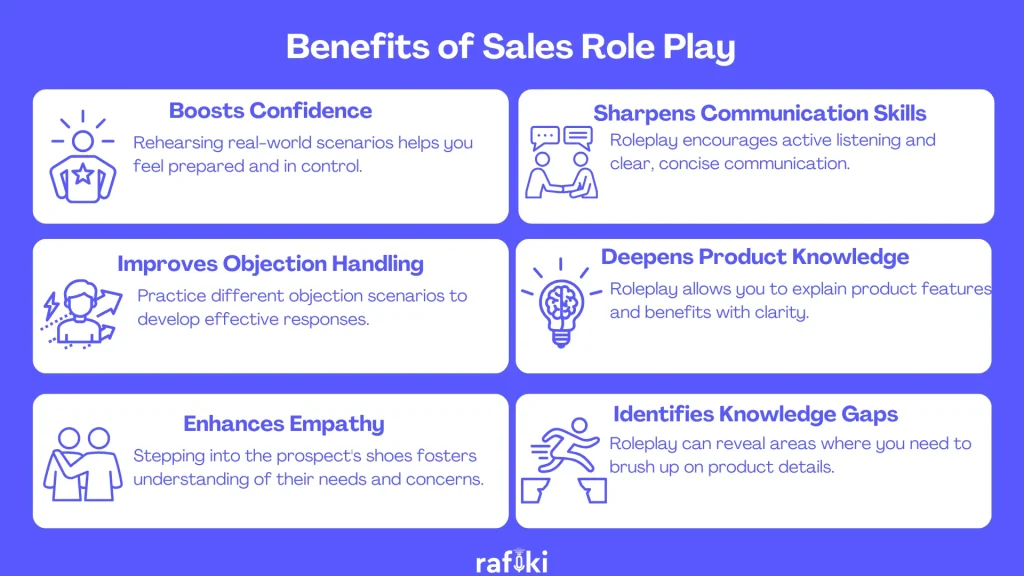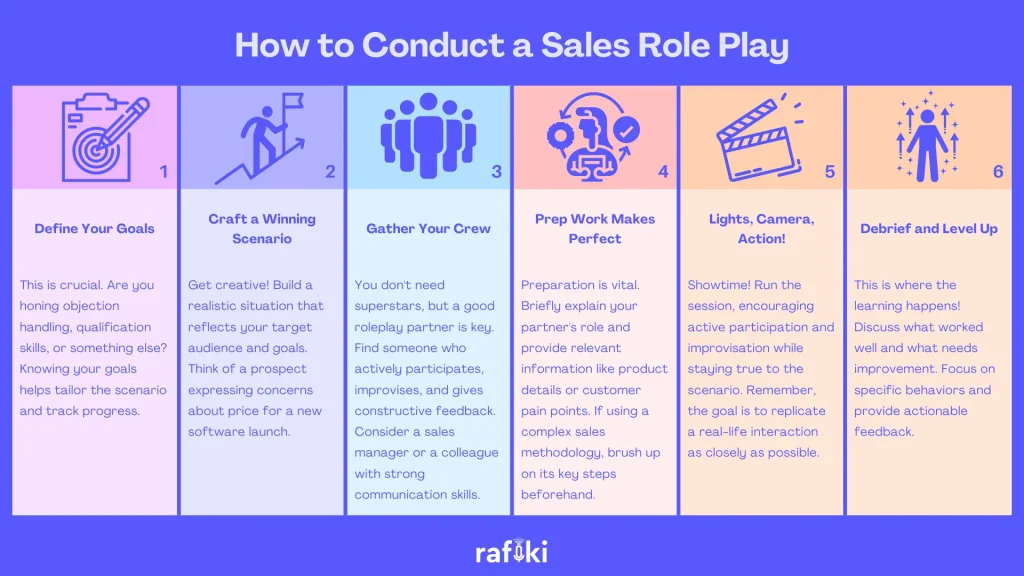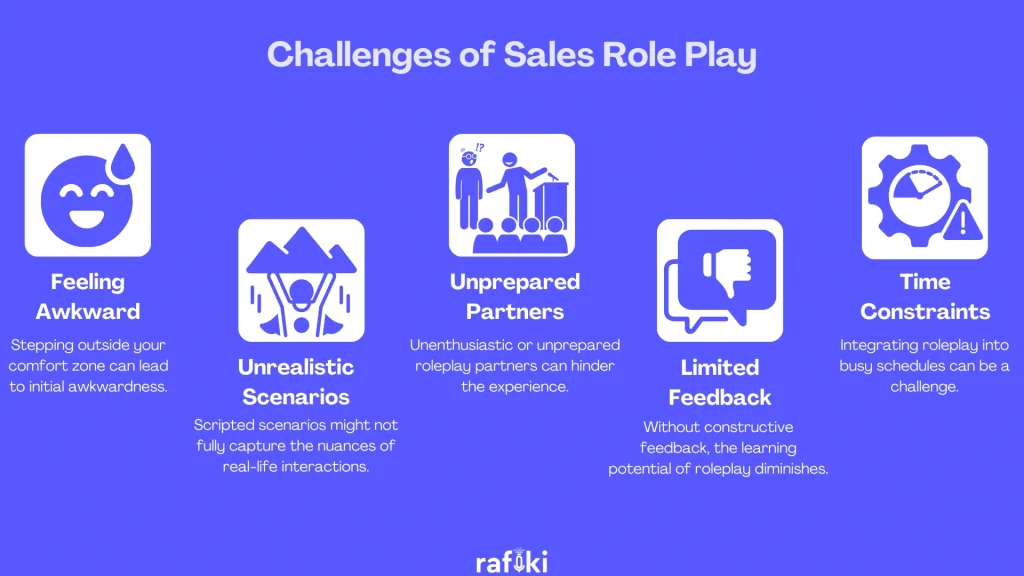Why Rafiki
Pricing


Pricing
Solutions

RevOps Leaders
Synchronize revenue generating functions

SDR Leaders
Get your team aligned and Coach your Reps 3x faster at scale

Sales Leaders
Unlock pipeline truth, drive confident forecasts

It’s like what Mike Tyson once said - Everyone’s got a plan until they get punched in the mouth. Sales calls are no different. You juggle building rapport, understanding needs, and delivering a compelling pitch, all while facing unexpected objections that can feel like getting smacked in the noggin. But what if you could practice your act beforehand? Enter sales roleplay, a powerful tool that allows you to rehearse real-world scenarios in a safe space.
Put simply, sales role plays are about training your reps on how to take a punch (because they will), but still keep on going and eventually be victorious. By incorporating roleplay into your sales training, you can boost your confidence, refine your skills, and close more deals. Let’s explore when and how to conduct a sales role play!
Sales role play isn't about putting on a show. It's a training method that mimics real-world sales scenarios in a controlled environment. Think of it as a practice round before the big game. By taking on different roles, like a salesperson and a prospect, you can encounter common challenges and refine your responses.
The beauty of sales roleplay lies in its versatility. It can be tailored to address specific situations you might face, from tackling objections on a new product launch to confidently navigating the BANT qualification process (Budget, Authority, Need, and Timeline).
So, how does this translate to real-world benefits? Regular sales role play can significantly boost your confidence. The more you rehearse your pitch and responses to objections, the more comfortable you'll feel during actual sales calls. This translates to stronger communication skills, sharper product knowledge, and ultimately, the ability to close more deals.

Sales roleplay isn't a one-size-fits-all solution. But strategically implemented, it can be a game-changer for your sales game. Here are some prime scenarios where roleplay shines:
While role play can be a powerful tool, there are times where it might seem like a good idea but falls short. For instance, roleplaying with an inexperienced partner who doesn't provide constructive feedback can be more frustrating than helpful. Similarly, overly scripted scenarios might not capture the unpredictable nature of real conversations.
So, how do you translate theory into practice? Here's a step-by-step guide to ensure your sales role play sessions are effective and impactful:

The first step is figuring out what you want to achieve. Are you focusing on objection handling for a specific product? Do you want to improve your needs-assessment skills during the qualification stage? Having clear goals allows you to tailor the roleplay scenario and track your progress.
Here's where your creativity comes in! Craft a realistic scenario that reflects your target audience and goals. For example, if you're focusing on price objections for a new software launch, your scenario could involve a prospect expressing concerns about the cost compared to existing solutions.
You don't need a Hollywood cast, but the right roleplay partner can make all the difference. Ideally, find someone who can actively participate, improvise within the scenario, and provide constructive feedback. Consider involving a sales manager or a colleague with strong communication skills.
Don't wing it! Briefly brief your partner on their role and provide any necessary information, like product details or common customer pain points. If you're tackling a complex sales methodology, brushing up on its key steps beforehand can also be helpful.
Now, it's showtime! Run the role play session, encouraging active participation and improvisation while staying true to the core scenario. Remember, the goal is to replicate a real-life interaction as closely as possible.
Here's where the magic happens! After the roleplay, discuss what went well and areas for improvement. Focus on specific behaviors and provide actionable feedback. This is where Rafiki's Smart Call Scoring can be a valuable tool. By analyzing the roleplay recording, it can offer insights into your communication style, highlighting areas where you might need to refine your pitch or objection handling techniques.
Sales roleplay doesn't have to be limited to face-to-face interactions. Consider using AI-powered sales tools like Rafiki. Rafiki goes beyond recording by offering features like Smart Call Summary, which provides a human-grade written summary of the conversation, allowing you to focus on key takeaways and feedback.
Sales roleplay thrives on variety. Before we discuss scenarios, let’s remind ourselves the common challenges in conducting a sales role play:

With these in mind, here are 7 sales role play scenarios to target different aspects of the sales process:
Sales roleplay isn't just about ticking a training box. It's a powerful tool to hone your skills, boost confidence, and close more deals. By incorporating roleplay into your sales routine, you can transform from a nervous novice into a confident sales pro.
Ready to take your sales game to the next level? See how Rafiki can supercharge your sales role play sessions with features like Smart Call Summary and Ask Rafiki Anything. Sign up for your free 14-day trial today and unlock the full potential of sales roleplay!
Master Sales Role Playing